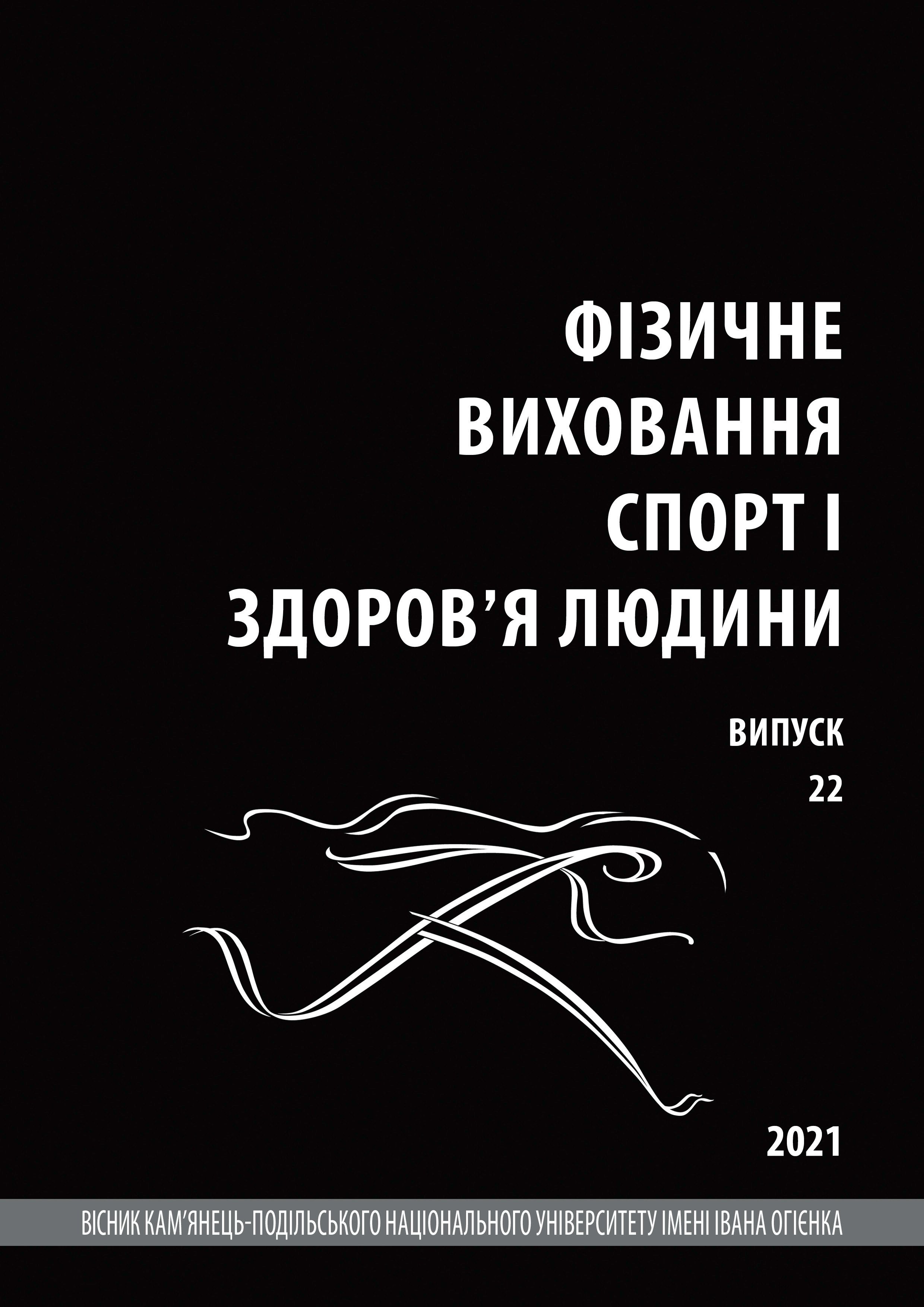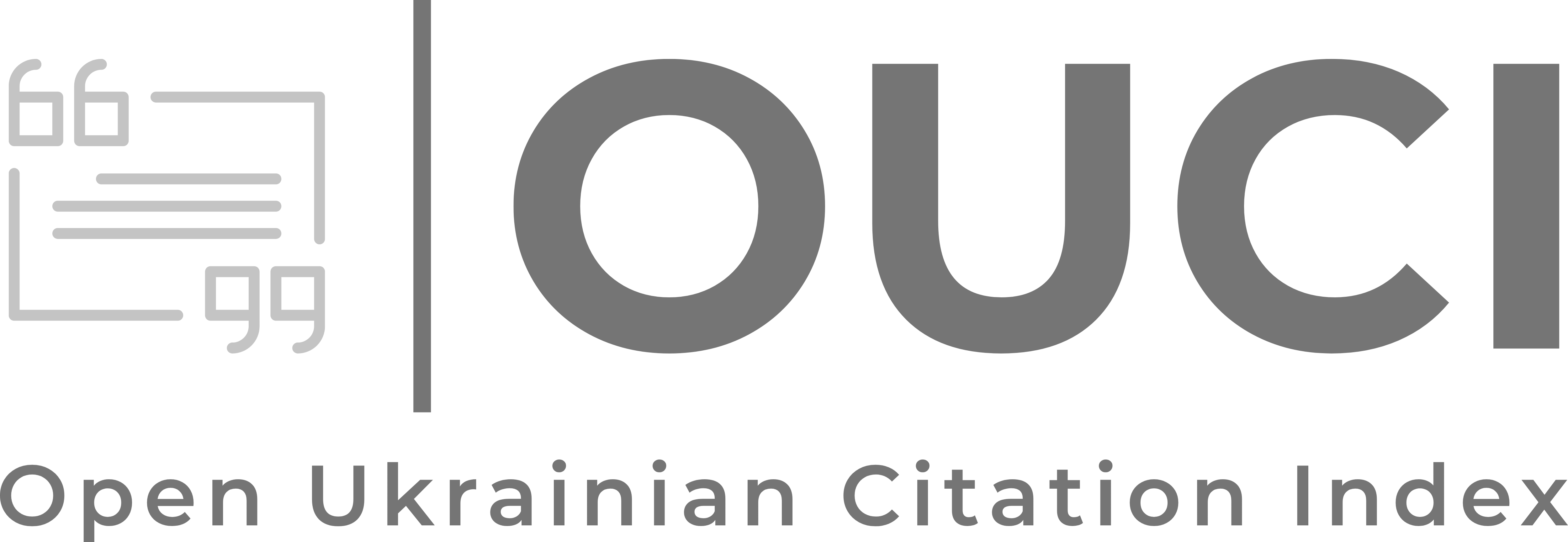Вплив авторської програми на швидкісні якості під час навчання плавання у військовому пенталлоні
DOI:
https://doi.org/10.32626/2309-8082.2021-22.11-15Ключові слова:
плавання, спортсмени, багатоборці, техніка, фізична підготовленість, смуга перешкод, військове п’ятиборствоАнотація
Популярність прикладного військового спорту в сучасному світі, його інтенсивна комерціалізація та професіоналізація, а також постійно висока політична значимість успіхів спортсменів призвели за останні роки до формування та вдосконалення високоефективних систем підготовки спортсменів. Про це свідчить безліч наукових досліджень, які стверджують, що результати міжнародного рівня доступні лише у виняткових випадках, обдарованих спортсменів з яскраво вираженими природними нахилами. досягнень у певному виді спорту (Платонов, 2013; Шинкарук, 2013; Романчук та Арабський, 2019) або змогли реалізувати їх у процесі тривалого вдосконалення (Красова, 2012).
Мета дослідження – покращити процес навчання плавання військових бійців п’ятиборства та визначити педагогічні методи контролю рівня розвитку сили, щоб поступово інформувати про функціональний стан організму спортсменів з метою відбору кандидатів у збірні команди.
Матеріал: Збільшення спортивних результатів у військовому п’ятиборстві вимагає постійного вдосконалення багатьох положень щодо техніки тренування. Практика спортивного тренування висуває нові варіанти побудови навчально-тренувального процесу та потребує їх удосконалення. У статті описано метод визначення рівня розвитку сили військового п’ятиборства, за допомогою якого можна відбирати кандидатів до національних команд з п’ятиборства в умовах недостатніх навчальних та матеріальних ресурсів (відсутність перешкод), а результати вправ представлено та проаналізовано (Александров І. С., 1970; Варакін А. П., 1983).
Результати: За результатами випробування експериментальної технології було зафіксовано значне поліпшення підготовленості до міцності у досліджуваній групі. Різниця між випробувальною та контрольною групами дуже значна з точки зору максимальної тяги на суші та динамометрії зап’ястя, що в свою чергу підтверджує ефективність використання спеціальних вправ для спеціальних спрямованості у військовому п’ятиборстві (Одеров А., Романчук С., Федак С., Кузнєцов М., Петрук А., Дунець-Лесько А. та ін. (2017)).
Посилання
Aleksandrov, I. S. (1970). Questions of sports training in modern pentathlon. Theory and practice of physical culture. N 11. 1-5.
Bondarchuk, I. Y. (1987). The influence of sports training on the functional capabilities of young runners. Theory and practice of physical culture. No 5. 30-31.
Borilkevich, V. E. (1989). Physical performance in extreme conditions of muscular activity: author’s abstract. dis. doct. biol. sciences. L. 47 p.
De Jesus, K. (2012). Kinemetic analysis of three water polo front crawl styles. Jornal of Sports Sciences. Vol. 30(7). 715-723.
Ivanova, E. M. (1992). Psychotechnology of studying a person in labour activity. Moscow: Publishing House of Moscow State University, 83-86.
Klymovych, V. (2020). Functional State of Military Personnel Engaged in Unarmed Combat. SportMont Journal, Vol. 18 (1). 99-101. DOI 10.26773/smj.200218.
Klymovych, V., Korchagin, M., Olkhovyі, O., Romanchuk, S., & Oderov, A. (2019). Motivation of forming students healthcare culture on principles of interdisciplinary integration. SportMont, 17(3). 79-83. doi:10.26773/ smj.191017.
Korchagin, M., Kurbakova, S. & Olkhovyi, O. (2017). Dependence of the success of professional activity of servicemen-operators on the level of psychophysiological qualities. Sports Gazette of Prydniprovia; 5(3). 65-68.
Krasova, I. (2012). Improvement of technical training in jump acrobatics through the impact on the sensorimotor coordination of athletes. Slobozhansky scientific and sports bulletin, 5(2), 27-32.
Lenart, D., Romanchuk, S., Andres, A., Lesko, O. & Romanov, I. (2019). Optimization of the training and training process of military pentathlon fighters in conditions of insufficient educational and material support. Bulletin of Kamianets-Podilskyi National University named after Ivan Ogienko. Physical Education, Sports and Human Health, Issue 13. 40-46.
Linets, M. M. (1994). Basics of the method of development of motor qualities. Lviv: Staffar.
Lototskyi, I. & Romanchuk, S. (2017). Problems of preparation of military pentathlon in particular disciplines and ways of their solving. Youth Scientific Bulletin of Lesya Ukrainka Eastern European National University. Physical Education and Sport, Issue 27. 222-224.
Lototskyi, I., Pylypchak, I., Romanov, I., Ostrovsky, M., Polegoyko, M. (2017). Improvement of the process of training military pentathlon with the use of specific training tools. Sports Science of Ukraine. 18-26.
Lyzogub, V.С. (1999). Formation of the strength of the nervous processes in human ontogenesis. Bulletin of the Taras Shevchenko Kyiv University. 65-68.
Makarenko, L. P. (1992). Building sports training for highly-qualified swimmers: Physical education and sport, N 1. 50- 52.
Makarenko, N. V. (1984). Latent period of sensory-motor reactions in persons with different functional mobility of the nervous system. Journal. higher nervous, 34(6). 1041-1047.
Oderov, A., Romanchuk, S., Fedak, S., Kuznetsov, M., Petruk, A., Dunets-Lesko, A., et al. (2017). Innovative approaches for evaluating physical fitness of servicemen in the system of professional training. Journal of Physical Education and Sport, 17(Suppl. 1), 23-27. doi:10.7752/jpes.2017.s1004.
Ostapenko, Y. A. (2014). Professional-meaning psychophysiological qualities of the information-logical group of specialties. Pedagogics, psychology and medical-biological problems of physical education and sport, 4(6). 34-39.
Platonov, V. (2004). The system of training athletes in Olympic sports. General theory and its practical applications. Kyiv: Olympic literature.
Platonov, V. (2013). Forcing the long-term training of athletes and Youth Olympic Games. Science in Olympic Sports, 2, 36-37.
Rolyuk, O. (2016). Improvement of physical training of military personnel by means of applied sports. Scientific journal. Scientific and pedagogical problems of physical culture / physical culture and sports, No. 01 (68) 16. 74-77.
Romanchuk, S. (2020). The impact of mass sports work in educational institution on the formation of cadets’ value attitude towards the physical education. SportMont Journal, Vol. 18 (1), р. 81-86. DOI 10.26773/smj.200214.
Shinkaruk, A. (2013). Justification of an integrated approach to the development of a selection program in cyclic sports. Theory and methodology of physical education and sports, 1. 24-25.
Tovstonoh, A. (2010). Individualization of training athletes as the basis for achieving a high sports result. Young Sports Science of Ukraine, 14(1). 322-327.
Varakin, A. P. (1983). Special workability. The development of physical qualities in modern pentathlon. Moskow: FiS.
Klymovych, V., Olkhovyі, O. & Romanchuk, S. (2016). Adoption of youth`s bodies to educational conditions in higher educational institutions. Journal of Physical Education and Sport, 13(1), 620-622.
##submission.downloads##
Опубліковано
Як цитувати
Номер
Розділ
Ліцензія

Ця робота ліцензується відповідно до Creative Commons Attribution-NonCommercial 4.0 International License.




